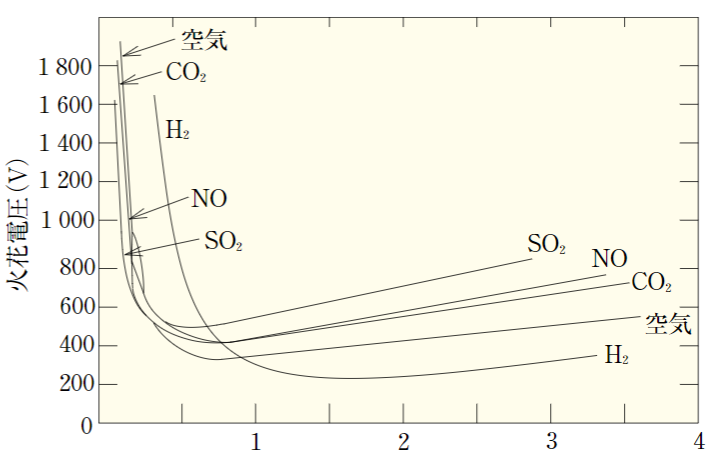This post is also available in: Japanese
Pachen’s Law is a principle that describes the voltage at which a spark discharge occurs. When a strong electric field is applied to gas, it eventually leads to breakdown and spark discharge.
The voltage V at which spark discharge occurs between parallel electrodes can be expressed as a function of the product of gas pressure and electrode spacing. V = f (p*d): p is the gas pressure (Torr), d is the distance between the electrodes (m), and a curve with V on the vertical axis and p*d on the horizontal axis is called the Paschen’s curve. Spark voltage has a minimum value of p*d, as the spark discharge occurs when electrons collide with gas molecules and ionize the gas.
While lack of pressure makes collisions less likely, excess pressure makes it difficult for electrons to be sufficiently accelerated prior to collision. Therefore, the spark voltage is high, either when p * d is large or small, making the midpoint of the two states to have the minimum value.

